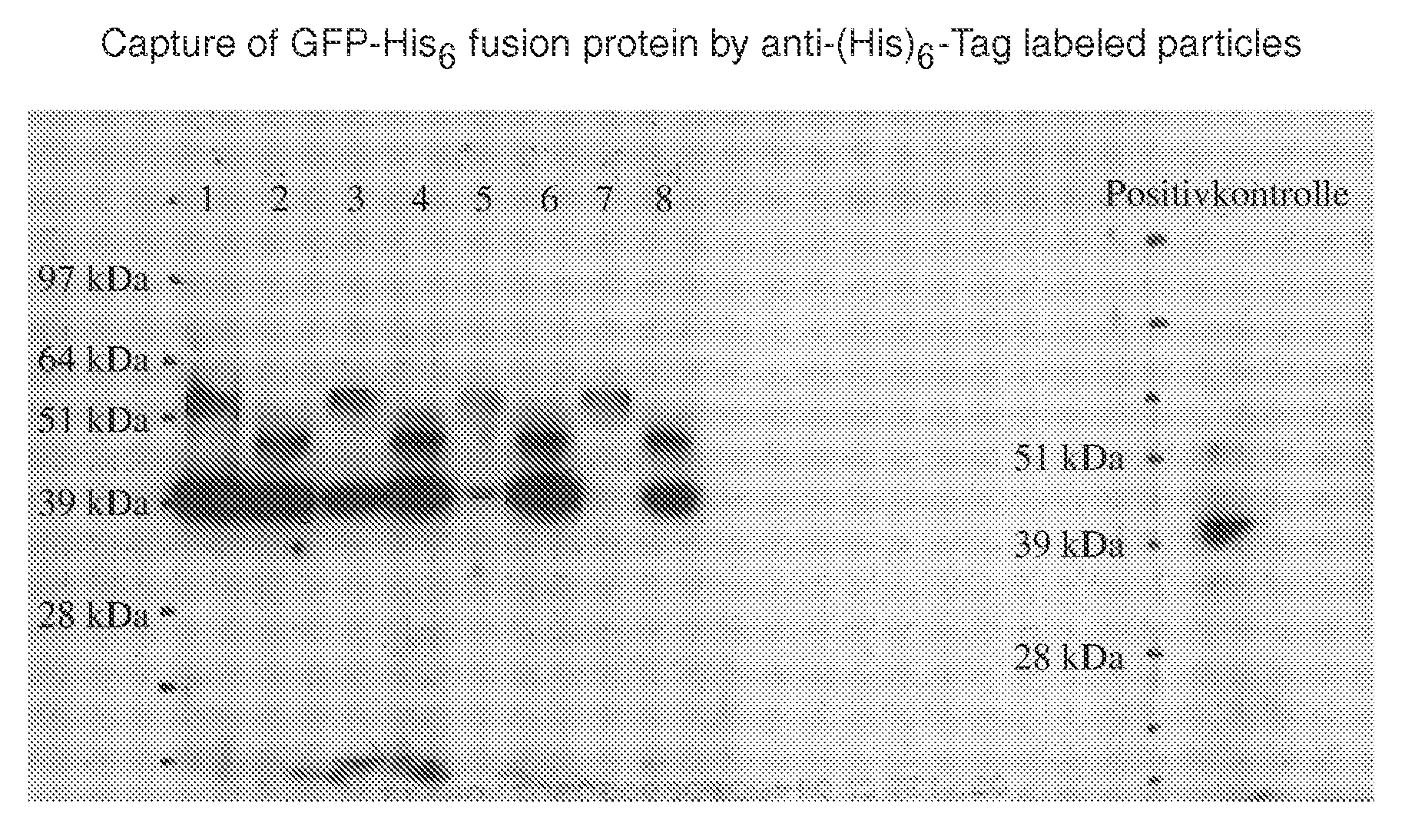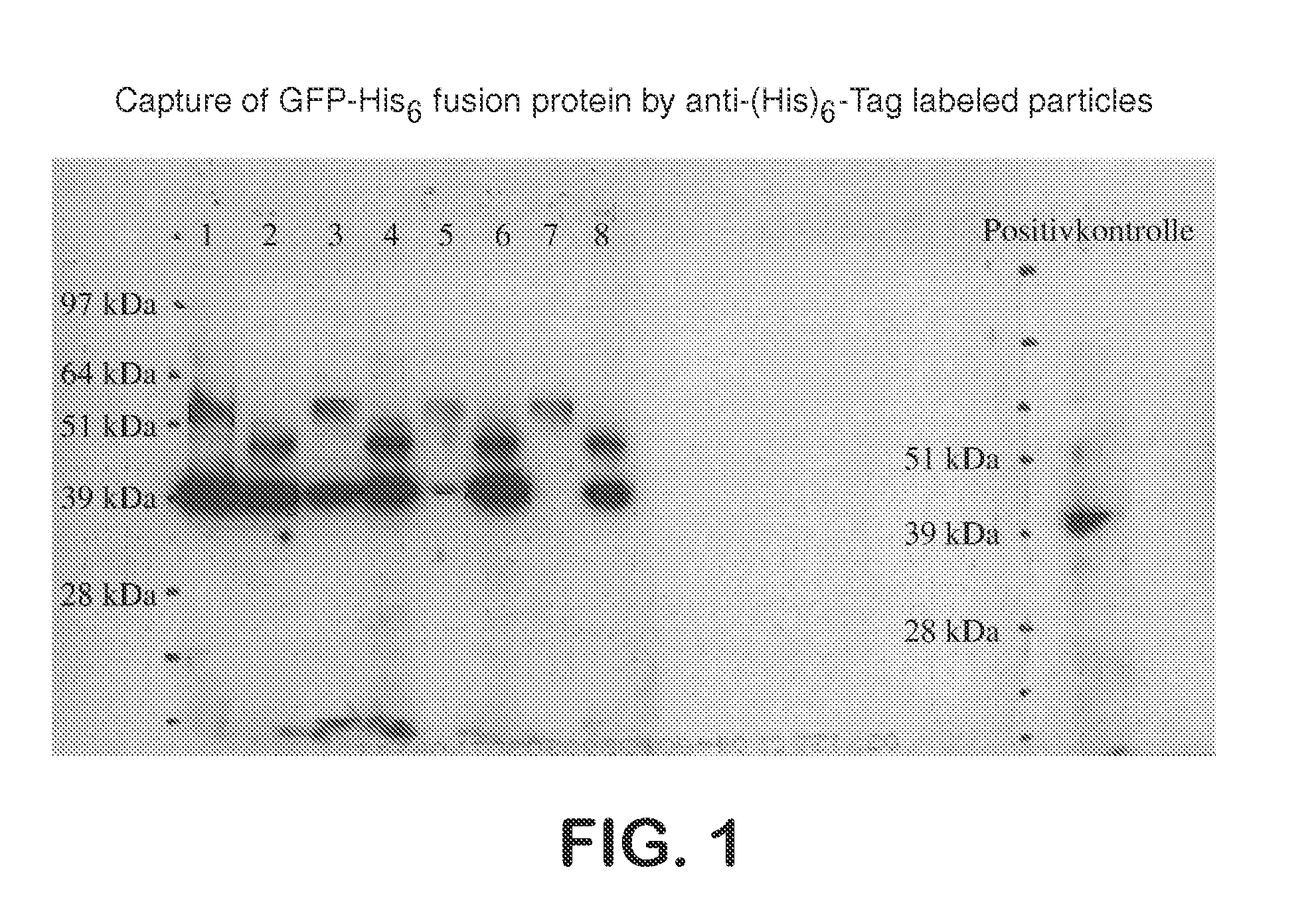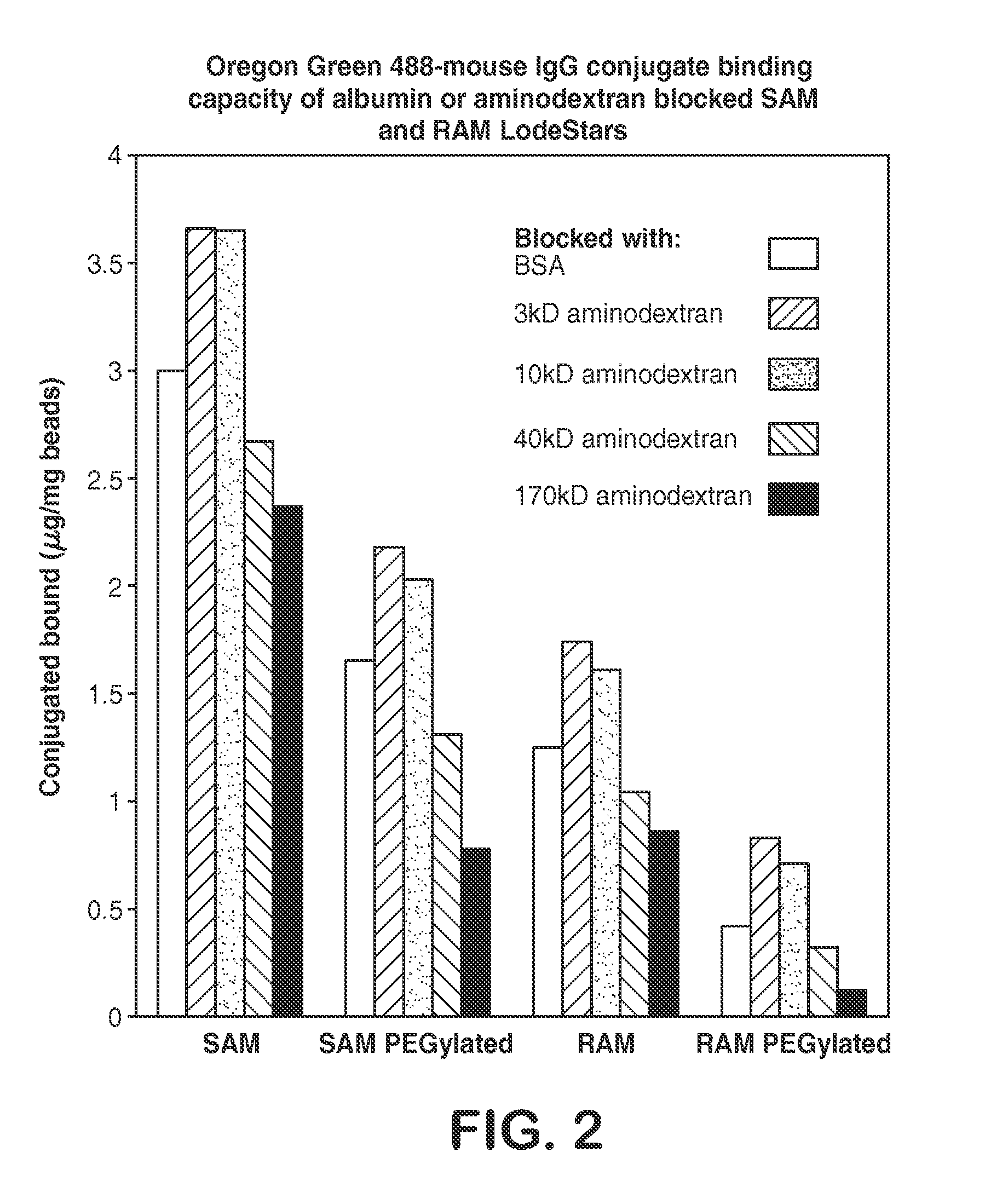Passivation of surfaces after ligand coupling
a technology of ligand coupling and surface, applied in the field of composition and methods of cell and analyte isolation, can solve the problems of poor quantification and purification, inaccurate detection, etc., and achieve the effect of optimizing surface characteristics and cost saving
- Summary
- Abstract
- Description
- Claims
- Application Information
AI Technical Summary
Problems solved by technology
Method used
Image
Examples
example 1
Isolation of a Polyhistidine-Tagged Fusion Protein Using Anti-(His)6-Tag Monoclonal Antibody-Coated Magnetic Particles
[0088]Genetically engineered polyhistidine tagged proteins are commonly employed in a wide variety of research applications. Their purification and detection usually takes advantage of the interaction of the polyhistidine sequence with certain heavy metal chelates. As an alternative, we coupled a mouse IgG1 anti-(His)6-Tag monoclonal antibody to 2.7 μm diameter superparamagnetic particles (LodeStars 2.7 Carboxyl, Varian, Inc., Palo Alto, Calif.) and subsequently coupled aminodextrans of a wide range of mean molecular weight to passivate the surface. The method of preparation of the anti-(His)6-Tag LodeStars is described below.
[0089]Ligand coupling was performed as follows: A 100 mg aliquot of LodeStars 2.7 Carboxyl was dispensed into a 10 ml polypropylene tube, a magnet was applied to the tube to isolate the magnetic particles, and the supernatant was aspirated. Two ...
example 2
Use of Anti-(His)6-Tag Coated Particles to Purify GFP-His6 Fusion Protein
[0095]The effect of dextran and PEG coating on the ability of anti-(His)6-Tag LodeStars to isolate full length His6-Tag proteins was tested. The test protein was a His6-Tag fusion protein: green fluorescent protein (GFP-His6 fusion protein) of 43 kD expressed in HeLa cells. The purification methodology is summarized below. Five 10 cm-Plates (each about 6×105 cells) were transfected using Superfect (Qiagen GmbH) as per manufacturers instruction. The transfection was checked after two days. About 30% of the cells were transfected. All cells were pooled and lysed in 5 ml lysis buffer; 500 μl were used in each subsequent experiment.
[0096]Preparation: HeLa cells expressing a 43 kD His6-Tag green fluorescent protein (GFP-His6 fusion protein) were washed in PBS pH 7.4 and resuspended in lysis buffer (20 mM HEPES / KOH pH 7.4, 125 mM NaCl, 0.5 mM EDTA, 1% Igepal, 10% Glycerol, EDTA-free Protease-Inhibitor), the cells wer...
example 3
Use of Antibody Coated Particles to Bind Mouse Anti-CD34+ Antibody
[0098]The ability of labeled particles to isolate cells was investigated. Sheep anti-mouse IgG antibody (SAM) or rat anti-mouse IgG monoclonal antibody (RAM) coated magnetic particles (LodeStars 2.7 Carboxyl, Varian, Inc.) were prepared for isolation of CD34+ cells from human blood and their subsequent release. The covalently coupled SAM or RAM antibody binds an IgG1 mouse monoclonal antibody that in turn binds the CD34 cell surface antigen. In initial experiments, SAM or RAM antibody was covalently coupled to magnetic particles, followed by reacting with Tris to block remaining reactive esters.
[0099]Briefly, LodeStars 2.7 Carboxyl were activated using standard EDC / Sulfo-NHS chemistry in 25 mM MES pH 5.0 buffer to form reactive Sulfo-NHS esters as described in Example 1. SAM at 62.5, 125, 250, 500 and 1000 μg / ml or RAM at 1000 μg / ml were coupled in 25 mM MES pH 5.0 (SAM) or pH 6.0 (RAM), a magnet was applied to the su...
PUM
| Property | Measurement | Unit |
|---|---|---|
| molecular weight | aaaaa | aaaaa |
| molecular weight | aaaaa | aaaaa |
| molecular weight | aaaaa | aaaaa |
Abstract
Description
Claims
Application Information
 Login to View More
Login to View More - R&D
- Intellectual Property
- Life Sciences
- Materials
- Tech Scout
- Unparalleled Data Quality
- Higher Quality Content
- 60% Fewer Hallucinations
Browse by: Latest US Patents, China's latest patents, Technical Efficacy Thesaurus, Application Domain, Technology Topic, Popular Technical Reports.
© 2025 PatSnap. All rights reserved.Legal|Privacy policy|Modern Slavery Act Transparency Statement|Sitemap|About US| Contact US: help@patsnap.com



